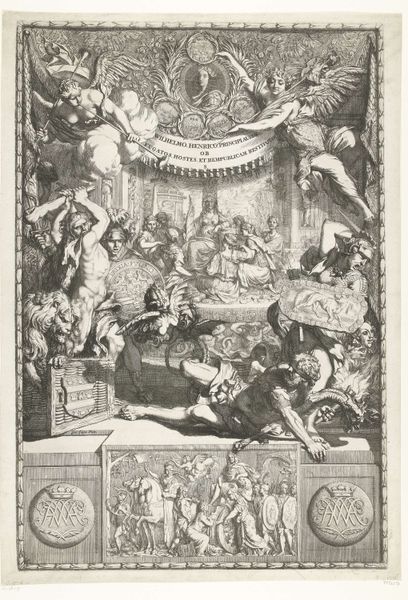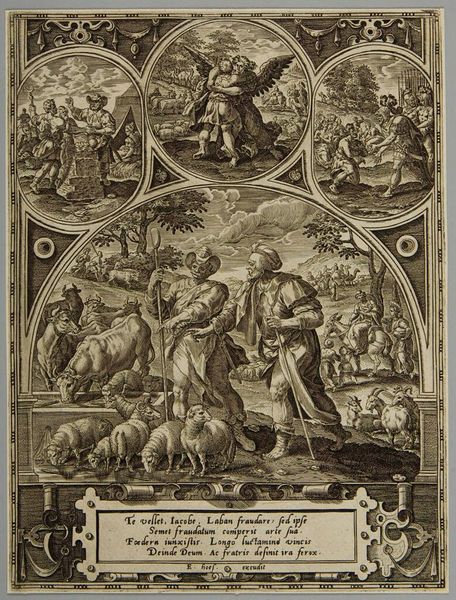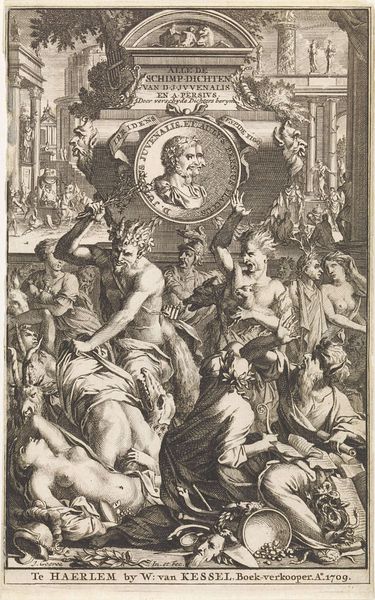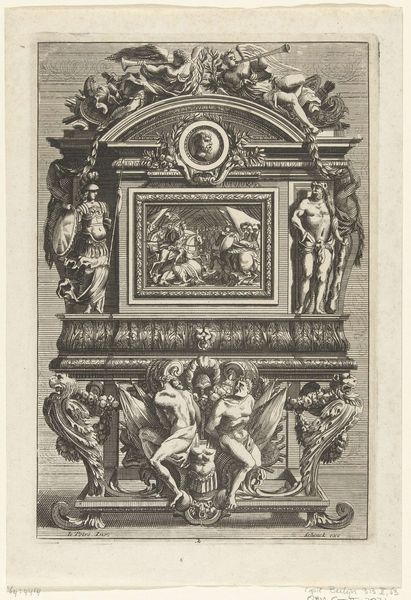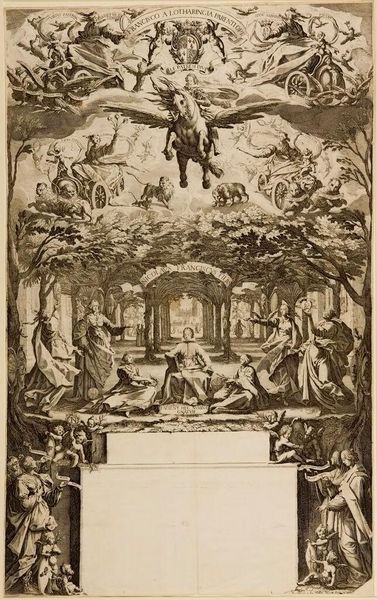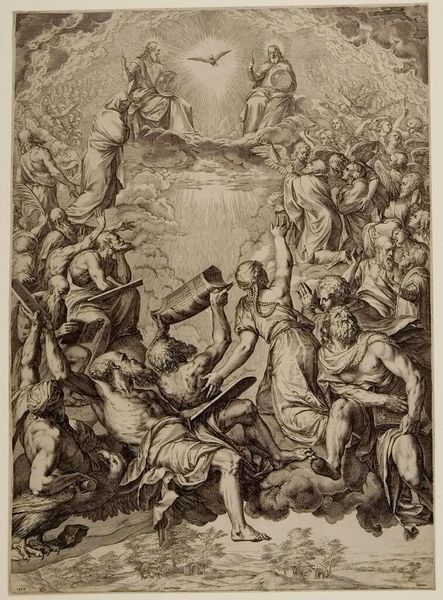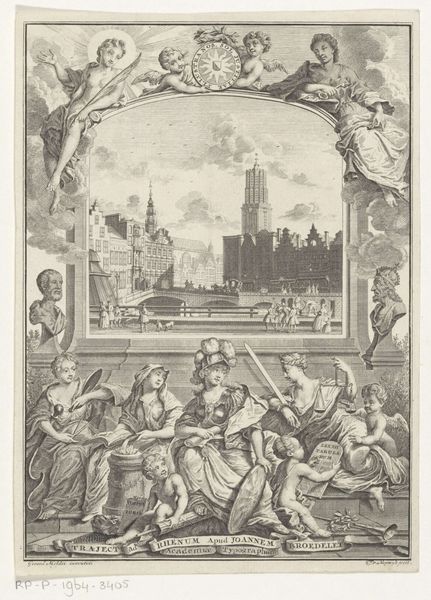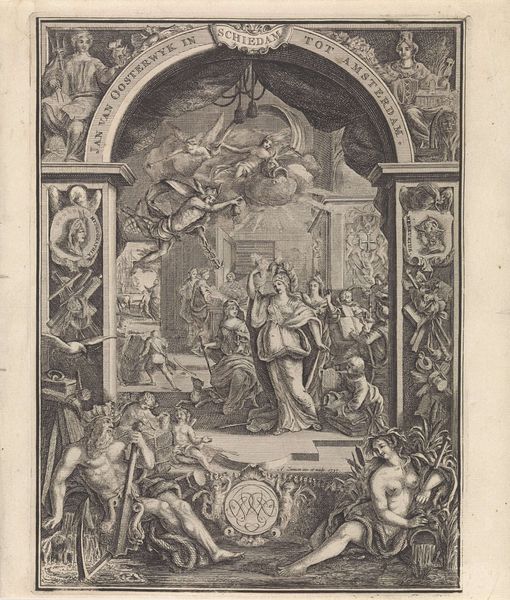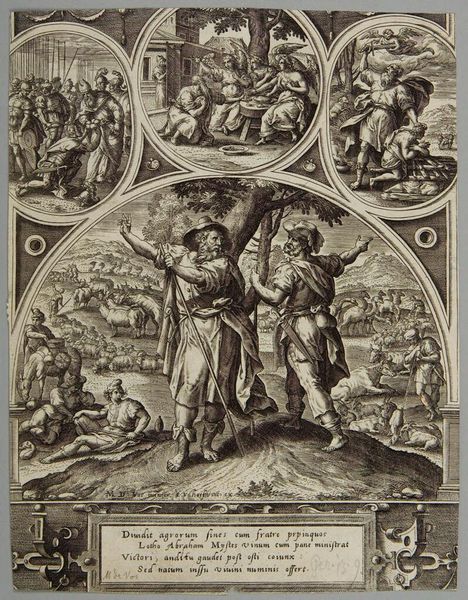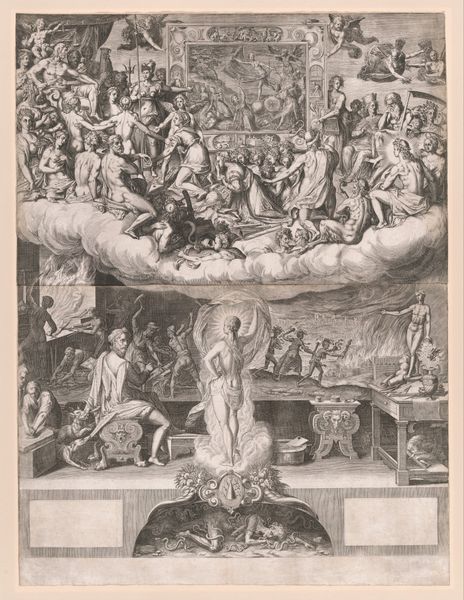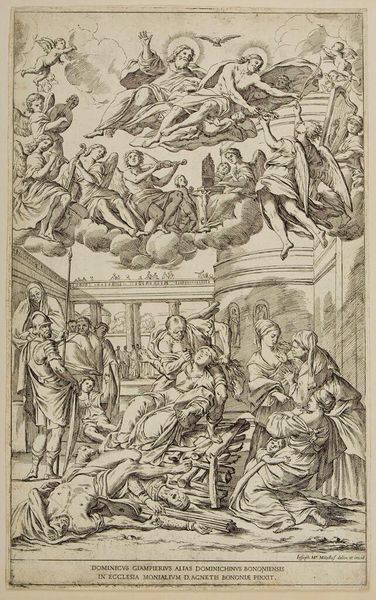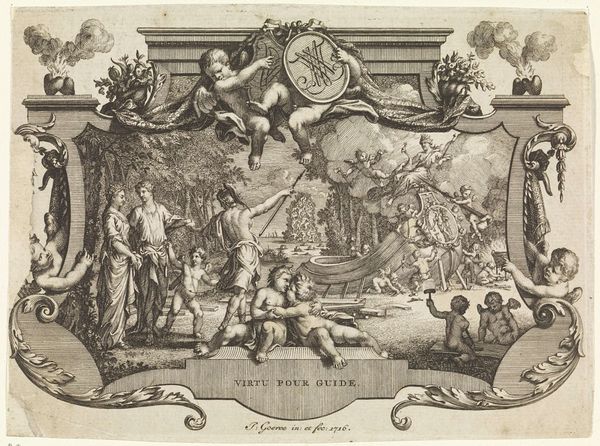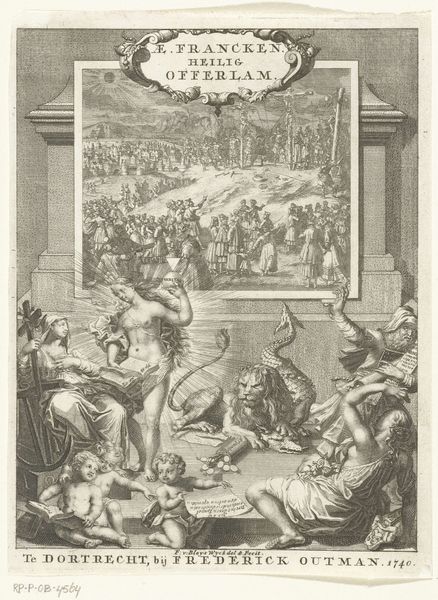
Allegory on the Glory of Willem III, Prince of Orange c. 1674
0:00
0:00
Dimensions: plate: 67.6 x 45.5 cm (26 5/8 x 17 15/16 in.)
Copyright: CC0 1.0
Curator: This is Gérard de Lairesse's "Allegory on the Glory of Willem III, Prince of Orange," held here at the Harvard Art Museums. It's a plate, measuring about 67 by 45 centimeters. Editor: It feels like a celebration of power, but in a rather violent way. The fallen figures at the bottom create a sense of unease, despite the heroic imagery above. Curator: The print reflects the political climate of the time. De Lairesse utilizes classical allegory to portray William as a restorer of the republic, a victor over enemies. The details in the print, from the banner to the defeated figures, reinforce this narrative. Editor: I find it complicated. While the imagery is explicitly celebratory of a powerful male figure, I can't help but consider this in the context of Dutch colonial history. Power always has a cost, especially for the subjugated. Curator: Context is crucial. Understanding the print's creation within its social and political framework allows us to examine the ways in which power was constructed and visualized. Editor: It's a powerful image, laden with symbolism that demands a critical reading. Curator: Indeed. De Lairesse’s work compels us to consider the multifaceted aspects of power and representation in art.
Comments
No comments
Be the first to comment and join the conversation on the ultimate creative platform.
